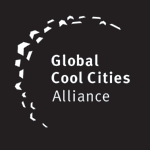The District of Columbia is susceptible to extreme heat events whose health impacts are exacerbated by the fact that the city is often significantly warmer than surrounding rural areas during the summer. The study found that a 10-percentage point increase in urban surface reflectivity could reduce the number of deaths during heat events by an average of 6%. Adding a 10% increase vegetative cover to the increases in reflectivity yielded an average 7% reduction in mortality during heat events. During the decades between 1948 and 2011, an average of 285 people died of heat-related causes. A 6-7% decrease in mortality would save approximately 20 lives per decade. In addition, an even larger reduction would be expected in hospital admissions from heat-related illness, although this was not a specific finding of this analysis. Changes in temperature and humidity (as measured by dew point temperature) in both scenarios were relatively minor, yet were significant enough to contribute to the reduction of deaths.
The District, given its current policy landscape and development, could achieve the increases in reflectivity and vegetation used in this study. Increasing District-wide roof reflectivity by 10 percentage points is achievable by converting dark grey roofs to white roofs on approximately 25 percent of the District’s buildings. Assuming the average roof lasts 20 years, the District could achieve this with end-of-life roof replacements in slightly more than 5 years. Achieving the same increase in reflectivity for pavements would require the conversion of 50 percent of District pavements from dark asphalt to a slightly lighter option like grey concrete. A significantly smaller percentage of pavements would need to be converted if cool coatings were applied where feasible.
Get the full study on our Cool Roofs and Cool Pavements ToolKit here.
